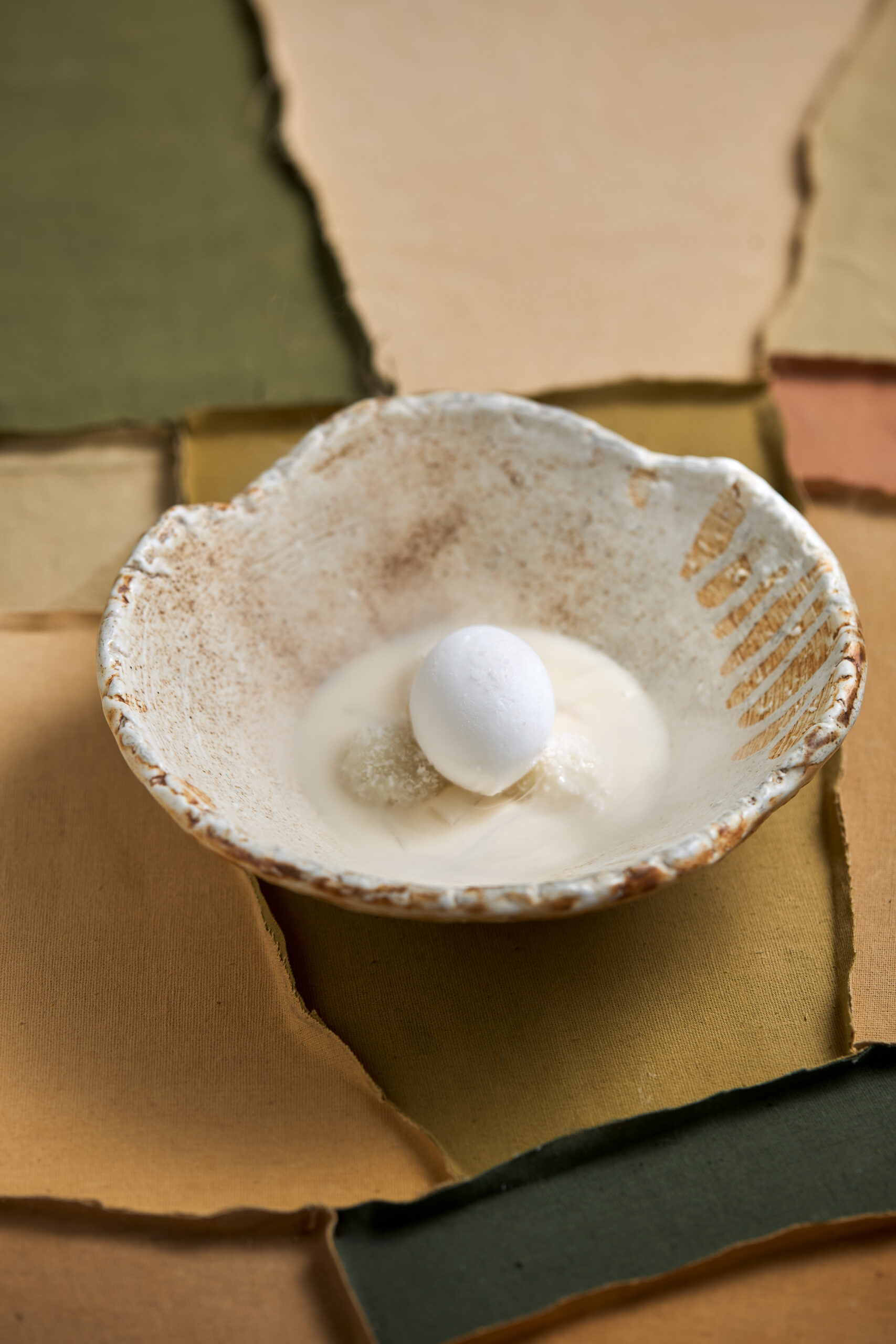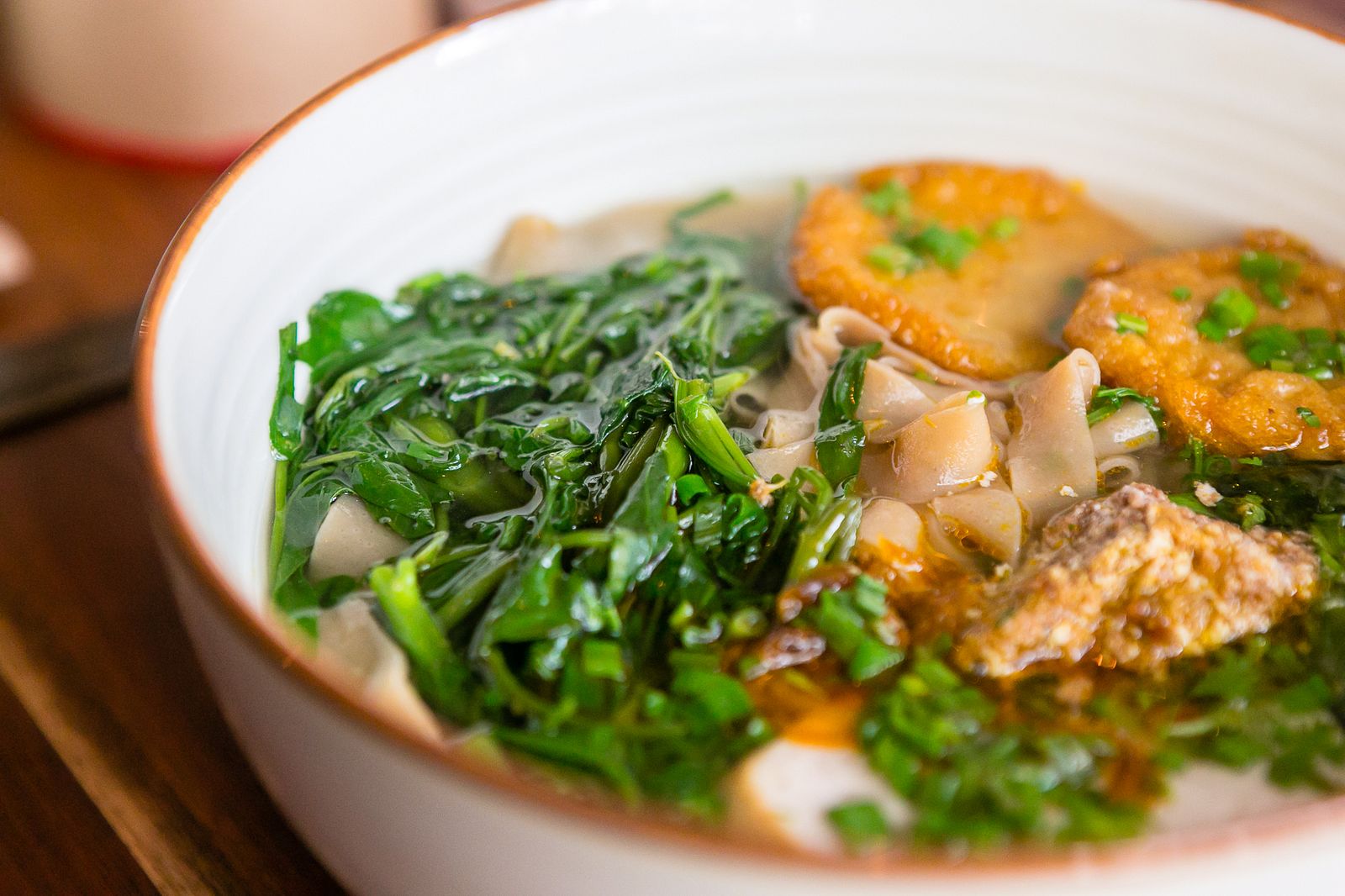At Chapter Dining, sustainability is not just a concept. It’s an everyday commitment woven into the core of our culinary philosophy. Among the practices we embrace, nose-to-tail cooking stands out as both a creative and ethical approach to modern cuisine. It’s a method that not only minimizes food waste but also celebrates the full spectrum of flavor hidden within each ingredient. When paired with the diverse produce of Northern Vietnam, nose-to-tail becomes more than a cooking technique — it becomes a story of cultural respect, culinary ingenuity, and mindful consumption.
Table of Contents
What is nose-to-tail cooking and the philosophy behind?
Nose-to-tail cooking is the practice of using every edible part of an animal, from the prized cuts to the often-overlooked offal, bones, and skin. Rooted in traditional cooking cultures around the world, this method reflects a deep respect for the animal and the resources used to raise it. Rather than discarding usable parts, nose-to-tail elevates them into creative, thoughtful, and delicious dishes.
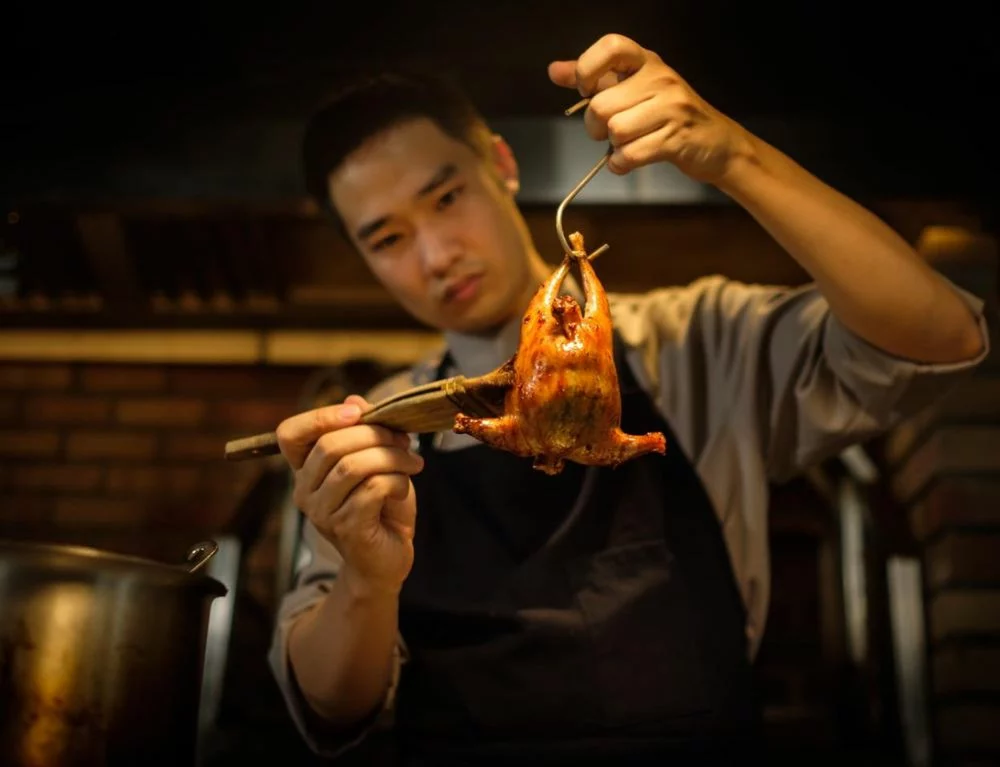
For Chapter Dining, this isn’t simply about efficiency. It’s a reflection of our core philosophy in waste mitigation. Every dish is a conscious act of environmental responsibility. Food production places immense strain on global ecosystems, especially meat production. By finding purpose in every part of an animal, we reduce food loss and honor our ingredients fully.
In today’s world, more diners are seeking ethical choices. While many turn toward vegetarian or flexitarian diets, nose-to-tail cooking offers another sustainable answer at a Hanoi fine dining restaurant such as Chapter. It redefines luxury through resourcefulness and purpose.
Our commitment extends beyond animal products. We apply a similar philosophy to local plants and herbs. Take the Gongcai (rau tiến vua in Vietnamese), a local vegetable from the mountains of Northern Vietnam. Our chefs dry and powder the young stalks for dessert coating, while the juicy stems appear in main dishes. Nothing was wasted. Every texture and flavor found its place.
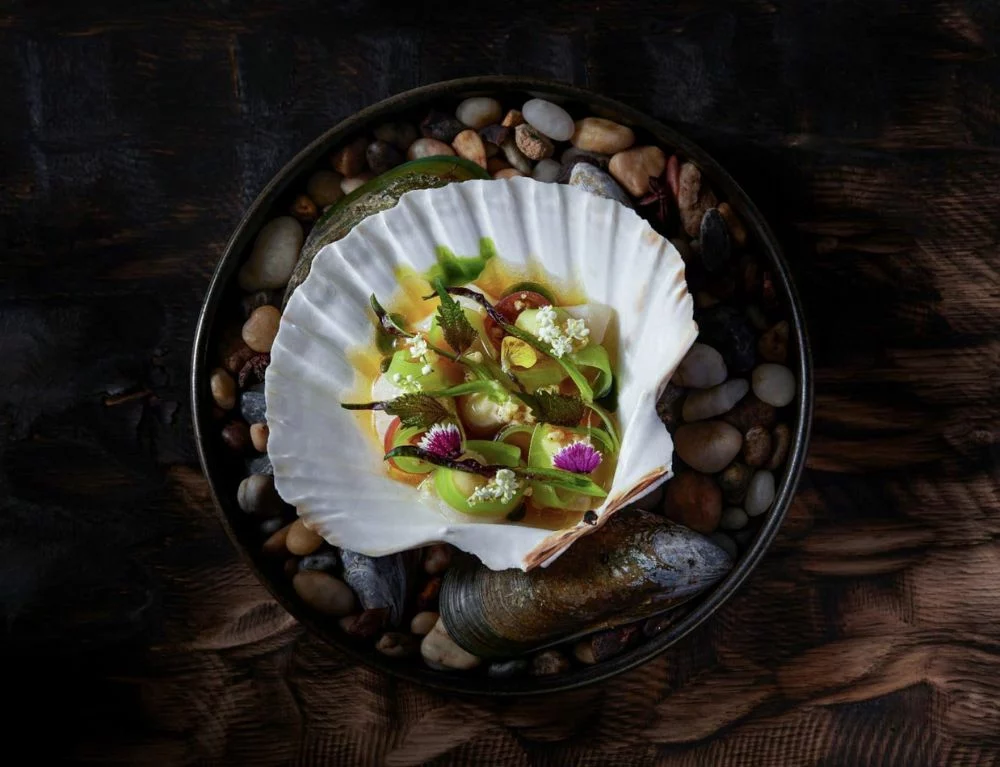
Why nose-to-tail matters at Chapter Dining?
Our Chapter menu is a 13-course tasting experience rooted in contemporary Northern Vietnamese cuisine, with techniques drawn from French, Nordic, English, and molecular gastronomy. But at its heart, our food is defined by Northern Vietnamese traditions.
For our Head Chef Truong Quang Dung and the team, nose-to-tail cooking is a playground of flavor and innovation. We’ve long believed that so-called “humble” cuts, such as ox tail, shin, pig’s trotters, hold far more depth and complexity than overvalued filets.
As Chef Quang Dung once shared, “There are a million things you can do with an ox tail, but with filet mignon, you just roast it. Who judges what is the best cut of meat anyway? Lobsters were once fed to prisoners in America. In Vietnam, the most expensive cut of beef is not filet mignon — it is the shin, which I don’t think tastes any less good.”
One memorable example at Chapter Dining was a pig’s trotter dish. The feet were deboned and stuffed with foie gras terrine and Vietnamese pork charcuterie, plated with fermented pickles and native herbs. What might have been discarded elsewhere became a centerpiece. An everyday ingredient is now elevated into a high-end culinary experience.
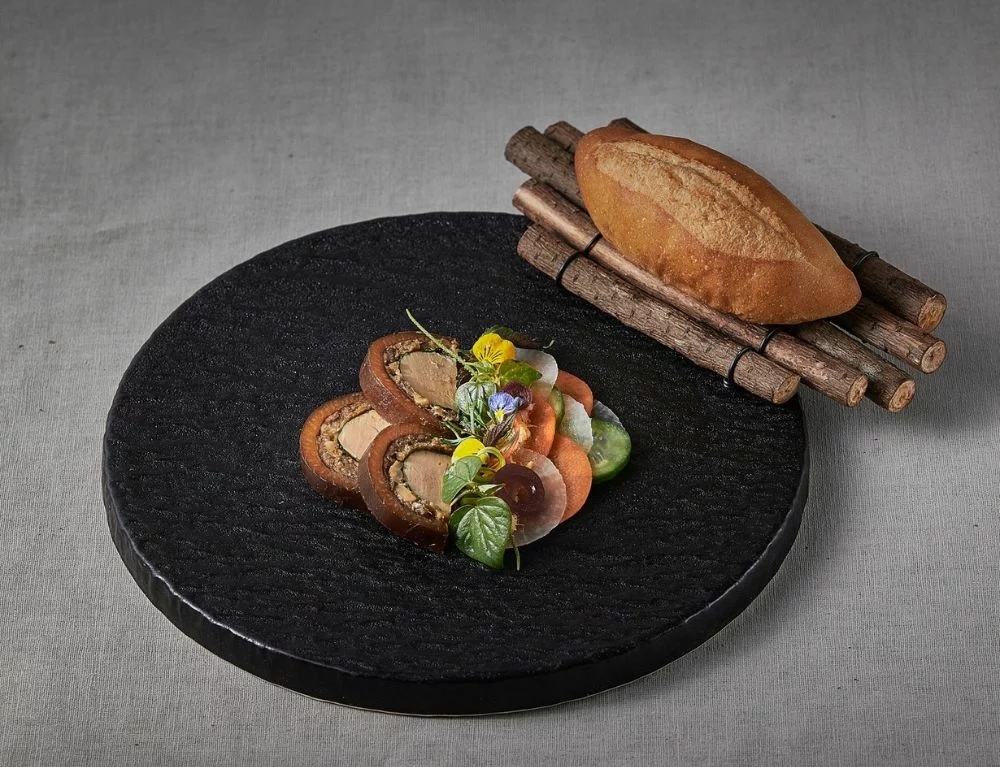
Nose-to-tail doesn’t just reduce waste. It boosts creativity in Chapter’s kitchen. It challenges our chefs to think differently, to transform overlooked parts into elegant expressions of heritage and skill. So fine dining can seamlessly coexist with creativity and sustainability. It’s how we build a resilient, inventive team that makes the most of every ingredient available.
From nose to tail – Signature pigeon dish at Chapter
A seasonal highlight in Chapter Dining’s menu is the pigeon dish, a perfect reflection of our nose-to-tail cooking ethos. Every part of the bird is used, with no element going to waste.
- The breast is carefully filleted and stuffed with mushrooms, served as the centerpiece of the course.
- The thigh meat is slow-cooked and transformed into a soft, flavorful bao bun filling.
- The bones are simmered into a consommé with goji berries and mountain mushrooms, creating a deeply comforting broth.
More than a dish, it’s a lesson in balance, sustainability, and elegance. We source our pigeons from Quoc Anh Cooperative, a pioneering farm that integrates science and technology into ethical poultry production. Their bio-mattress farming system ensures clean living conditions while reducing environmental impact, values that align with our vision for a better food system.
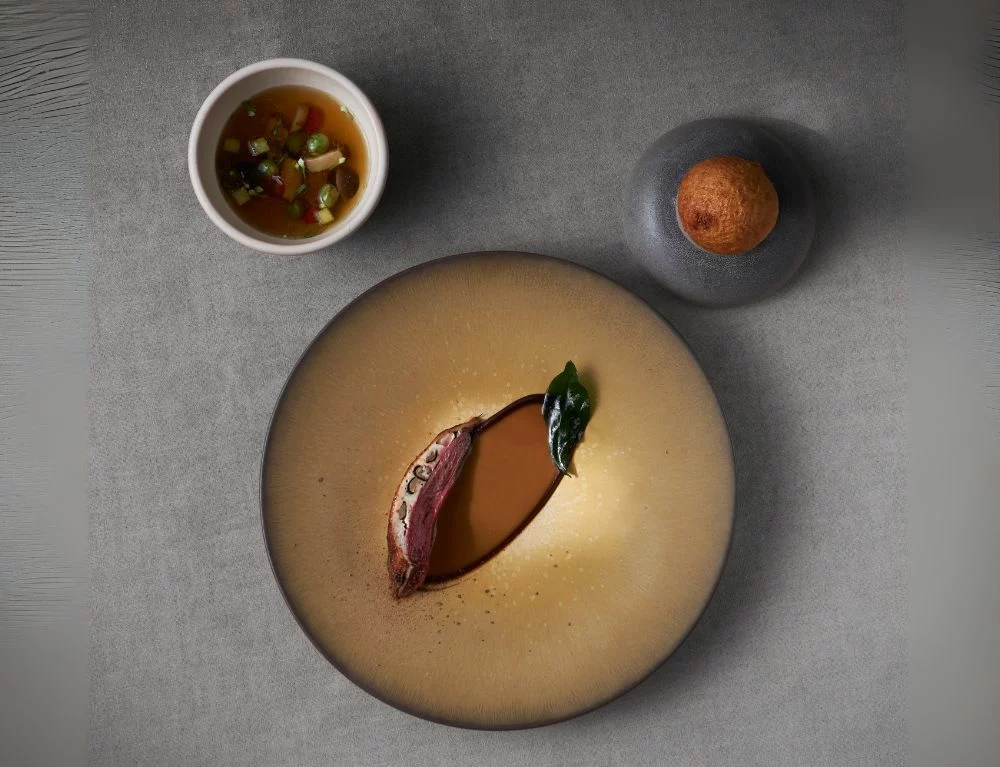
Nose-to-tail cooking is not new in Vietnam. For generations, households across the country have practiced whole-animal use out of both necessity and wisdom. What Chapter Dining does is bring that practice to the realm of fine dining, extracting maximum flavor and meaning from each local ingredient. With every course, we strive to reduce waste, honor our traditions, and create unforgettable fine dining experiences in Hanoi rooted in care.
_________
Chapter Dining
12C Chan Cam, Hoan Kiem, Hanoi
Mon – Sat from 18:00 – 23:00
Tel: +84 333 201 221 – Reserve a table
Email: reservation@chapter.vn

